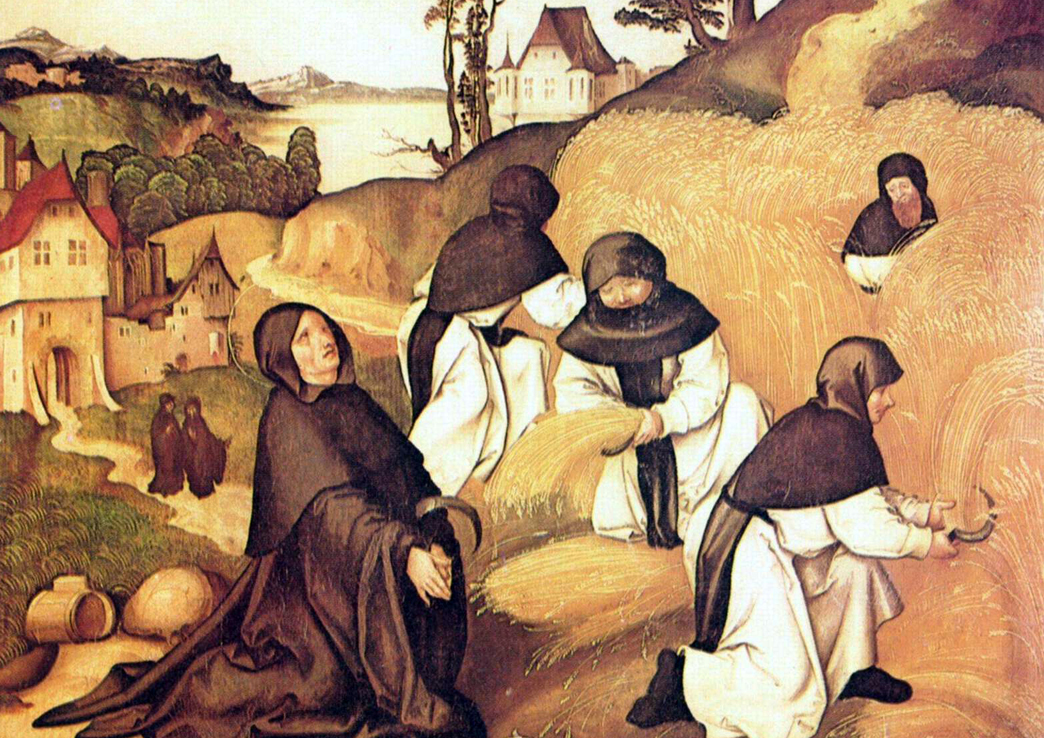Cistercian Studies is a fruitful field inside Medieval Studies in general. Here is a list of books, which can be used as introduction.
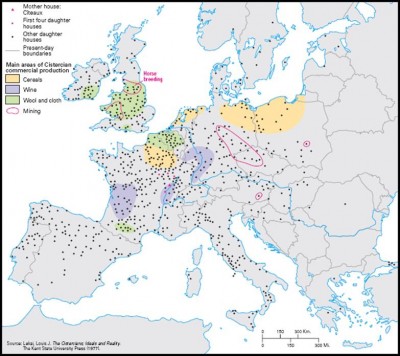 In the 11th century small groups of young noblemen from Northern France began to build communities, which they believed were closer to the original dreams of St. Benedict than those, which they experienced in the huge and successful Cluniac institutions. One of these groups, led by a young noble, Robert, founded a small monastery in Molesmes. Later he sought together with his friend Steven of Harding, to found an even more remote and austere community. This led to the first monastery in Cîteaux. In 1108 Steven of Harding was called as abbot. He was soon known as a charismatic leader as well as gifted administrator and soon it was possible to sprout new monasteries, called ‘daughters’.
In the 11th century small groups of young noblemen from Northern France began to build communities, which they believed were closer to the original dreams of St. Benedict than those, which they experienced in the huge and successful Cluniac institutions. One of these groups, led by a young noble, Robert, founded a small monastery in Molesmes. Later he sought together with his friend Steven of Harding, to found an even more remote and austere community. This led to the first monastery in Cîteaux. In 1108 Steven of Harding was called as abbot. He was soon known as a charismatic leader as well as gifted administrator and soon it was possible to sprout new monasteries, called ‘daughters’.
From around 1120 it became obvious that the ‘Novum Monasterium’, Cîteaux, was not only a vibrant abbey, but the center of a whole new religious order, which came to revolutionise the way in which religious monasteries, convents and abbeys were organised. In short: the Abbot of Cîteaux was not only responsible for his own institution; he was also called upon to visit and oversee his “daughters”. This system laid the foundation for an enormous administrative bureaucracy, which means that the study of the spiritual as well as practical ways of life in the Cistercian Abbeys continues to uncover fascinating aspects of the life of the monks and (later) sisters.
As is well-known, the order grew exponentially in the few decades. From the very fragile start around 1100, the Order could muster 322 abbeys in 1150 and double that a hundred years later. Around 1300, when the religious fewer had expired, there were 697 abbeys from Lyse, north of Trondheim in Norway, to Roccadia in Sicily. All these abbeys were organized inside 5 families: Cîteaux and its four primary daughters, Clairvaux, Morimond, Pontigny, and La Ferté.
A decisive factor was of course the recruitment of St. Bernard of Clairvaux, whose spiritual and aesthetic inspiration came to define the Cistercian way of life in such a way, that we even today are able to recognise the special aura, which surrounds the physical remains of these many abbeys, monasteries and convents.
Companions and Introductions
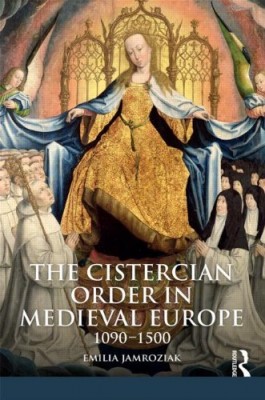 The Cistercian Order in Medieval Europe: 1090-1500 (The Medieval World)
The Cistercian Order in Medieval Europe: 1090-1500 (The Medieval World)
By Emilia Jamroziak
Routledge2013
ISBN-10: 1405858648
ISBN-13: 978-1405858649
ABSTRACT:
The Cistercian Order in Medieval Europe offers an accessible and engaging history of the Order from its beginnings in the twelfth century through to the early sixteenth century. Unlike most other existing volumes on this subject it gives a nuanced analysis of the late medieval Cistercian experience as well as the early years of the Order.
Jamroziak argues that the story of the Cistercian Order in the Middle Ages was not one of a ‘Golden Age’ followed by decline, nor was the true ‘Cistercian spirit’ exclusively embedded in the early texts to remain unchanged for centuries. Instead she shows how the Order functioned and changed over time as an international organisation, held together by a novel ‘management system’; from Estonia in the east to Portugal in the west, and from Norway to Italy. The ability to adapt and respond to these very different social and economic conditions is what made the Cistercians so successful.
- This book draws upon a wide range of primary sources, as well as scholarly literature in several languages, to explore the following key areas:
- the degree of centralisation versus local specificity
- how much the contact between monastic communities and lay people changed over time
- how the concept of reform was central to the Medieval history of the Cistercian Order
This book appeals to anyone interested in Medieval history and the Medieval Church more generally as well as those with a particular interest in monasticism.
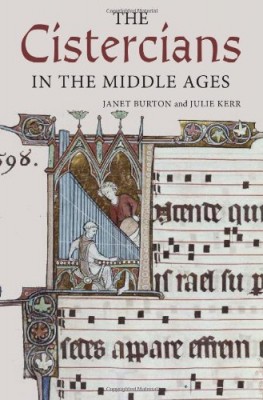 The Cistercians in the Middle Ages (Monastic Orders)
The Cistercians in the Middle Ages (Monastic Orders)
by Janet Burton (Author), Julie Kerr (Author)
Boydell Press 2011
ISBN-10: 184383667X
ISBN-13: 978-1843836674
ABSTRACT:
he Cistercians (White Monks) were the most successful monastic experiment to emerge from the tumultuous intellectual and religious fervour of the eleventh and twelfth centuries. By around 1150 they had established houses the length and breadth of Western Christendom and were internationally renowned. They sought to return to a simple form of monastic life, as set down in the Rule of St Benedict, and preferred rural locations “far from the haunts of men”. But, as recent research has shown, they were by no means isolated from society but influenced, and were influenced by, the world around them; they moved with the times. This book seeks to explore the phenomenon that was the Cistercian Order, drawing on recent research from various disciplines to consider what it was that made the Cistercians distinctive and how they responded to developments. The book addresses current debates regarding the origins and evolution of the Order; discusses the key primary sources for knowledge; and covers architecture, administration, daily life, spirituality, the economy and the monks’ ties with the world. Professor Janet Burton teaches at the School of Archaeology, History and Anthropology, University of Wales Trinity Saint David; Dr Julie Kerr is Honorary Research Fellow in the School of History, University of St Andrews.
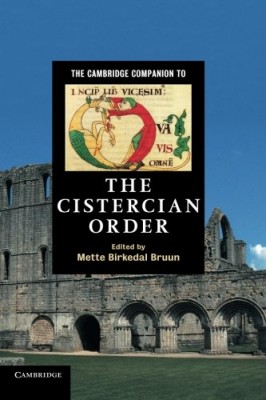 The Cambridge Companion to the Cistercian Order
The Cambridge Companion to the Cistercian Order
By Mette Birkedal Bruun (Editor)
Series: Cambridge Companions to Religion
Cambridge University Press 2012
ISBN-10: 0521171849
ISBN-13: 978-0521171847
ABSTRACT:
This volume presents the composite character of the Cistercian Order in its unity and diversity, detailing the white monks’ history from the Middle Ages to the present day. It charts the geographical spread of the Order from Burgundy to the peripheries of medieval Europe, examining key topics such as convents, liturgy, art, agriculture, spiritual life and education, providing an insight into Bernard of Clairvaux’s life, work and sense of self, as well as the lives of other key Cistercian figures. This Companion offers an accessible synthesis of contemporary scholarship on the Order’s interaction with the extramural world and its participation in, and contribution to, the cultural, economical and political climate of medieval Europe and beyond. The discussion contributes to the history of religious orders, and will be useful to those studying the twelfth-century renaissance, the apostolic movement and the role of religious life in medieval society.
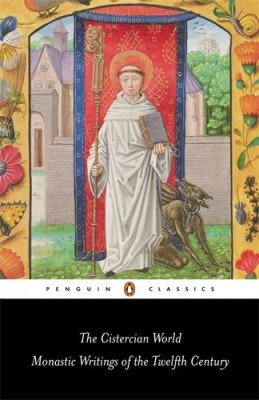 The Cistercian World: Monastic Writings of the Twelfth Century (Penguin Classics)
The Cistercian World: Monastic Writings of the Twelfth Century (Penguin Classics)
By Thomas Wyatt (Author), Pauline Matarasso (Introduction, Translator)
Penguin Classics 1993
ISBN-10: 0140433562
ISBN-13: 978-0140433562
ABSTRACT
The Cistercian Order was born in Burgundy at the start of the twelfth century as a movement of radical renewal – an Order that survives to this day with the greater part of its written heritage preserved. This volume brings together a selection of its finest works, which speak powerfully across the centuries to modern readers. Writings by St Bernard of Clairvaux (c. 1090-1153) – including his letters, The Life of Malachy the Irishman, sermons on the Song of Songs and the sharply satirical Apologia for Abbot William – reveal him to be a highly individual and influential writer of the Middle Ages. Also included here are a charming description of Clairvaux, biographies of abbots and a series of exemplary stories, all drawing on the Scriptures to express intensely personal forms of monastic theology.
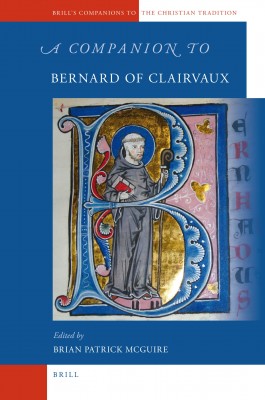 A Companion to Bernard of Clairvaux (Brill’s Companions to the Christian Tradition)
A Companion to Bernard of Clairvaux (Brill’s Companions to the Christian Tradition)
by Brian Patrick McGuire (Author)
Brill 2011
ISBN-10: 9004201394
ISBN-13: 978-9004201392
ABSTRACT:
Bernard of Clairvaux emerges from these studies as a vibrant, challenging and illuminating representative of the monastic culture of the twelfth century. In taking on Peter Abelard and the new scholasticism he helped define the very world he opposed and thus contributed to the renaissance of the twelfth century.
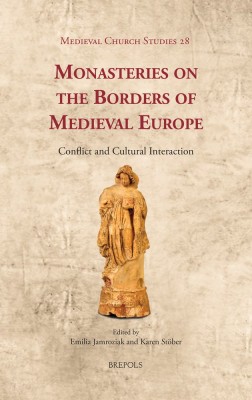 Monasteries on the Borders of Medieval Europe: Conflict and Cultural Interaction.
Monasteries on the Borders of Medieval Europe: Conflict and Cultural Interaction.
By Emilia Jamroziak Karen Stöber.
Series: Medieval Church Studies, 28.
Turnhout: Brepols, 2013.
ISBN: 9782503545356
ISBN: 9782503551623
ABSTRACT:
As a historical and cultural phenomenon, monasticism always had a close connection with frontiers. The earliest monasteries were believed to be founded in wildernesses and deserts, thus existing beyond society and the inhabited world in general. As intercessors praying for their patrons and benefactors, monastic communities also existed on the border between the earthly and the spiritual worlds.
In medieval Europe, however, the frontier nature of monasticism had specific manifestations in addition to the founding myths of monastic wilderness. In the twelfth and thirteenth centuries the expansion of Latin Europe in East-Central Europe, the Iberian Peninsula, Scandinavia, and into the Holy Land and Greece opened possibilities for extending monastic networks and establishing new houses. One of the most important parts of this process was the interaction between these new religious communities and the social world around them-an interaction that was characterised by various shades of hostility, cooperation, and adaptation to the local social and cultural framework.
This is the first collection to consider the phenomenon of monastic frontiers in a cross-disciplinary manner. The book’s ten chapters explore the role of monasteries in maintaining political and cultural borders, in breaking and sustaining linguistic boundaries in late medieval Europe, as well as in building and stabilizing Latin Christian cultural identities on the northern and southern frontiers of Europe. Using a wide range of textual, archaeological, and material evidence, an international group of authors examines the expansion of monastic and mendicant networks in Scandinavia, Iberia, East-Central Europe, the British Isles, northern France, the Balkans, and Frankish Greece.
CISTERCIAN ART AND ARCHITECTURE:
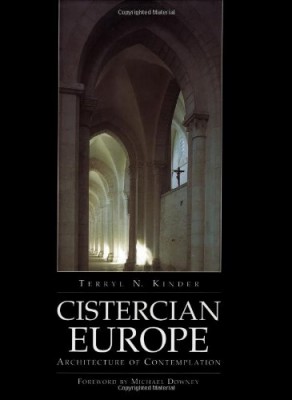 Cistercian Europe: Architecture of Contemplation (Cistercian Studies Series)
Cistercian Europe: Architecture of Contemplation (Cistercian Studies Series)
by Terryl N. Kinder (Author)
WB Eerdmans 2002
ISBN-10: 0802838871
ISBN-13: 978-0802838872
ABSTRACT:
An illustrated journey led by a leading architectural historian and Cistercian specialist to an architecture of compelling simplicity. Living, working, worshipping and praying within this austerely beautiful environment the monks sought transformation and re-formation into the image and likeness of God.
 Cistercian Art and Architecture in the British Isles
Cistercian Art and Architecture in the British Isles
Ed. by Christopher Norton and David Park
Cambridge University Press 2012
ISBN: 9780521181358
ABSTRACT:
From their introduction in the early twelfth century the Cistercians were one of the leading monastic orders in Britain. Many of the finest monastic remains – Fountains, Rievaulx and Tintern – are Cistercian. This 1986 book is a comprehensive survey of Cistercian art and architecture in the British Isles. The various contributions, all by leading specialists, cover the historical and literary background; the development of Cistercian architecture (especially in the twelfth and thirteenth centuries, when the Cistercians were in the forefront of architectural achievement, playing an important role in the introduction and dissemination of the Gothic style); and art forms such as wall painting, stained glass, tile pavements, and manuscript illumination, as well as liturgy and music. These studies reveal what was distinctively Cistercian in the art and architecture of the Order, and permit a distinct understanding of the remarkable contribution of the Cistercians to the culture of medieval Britain.
READ MORE:
Cistercian Studies Conference – Past and Future
VISIT:
The European Route of Cistercian abbeys
